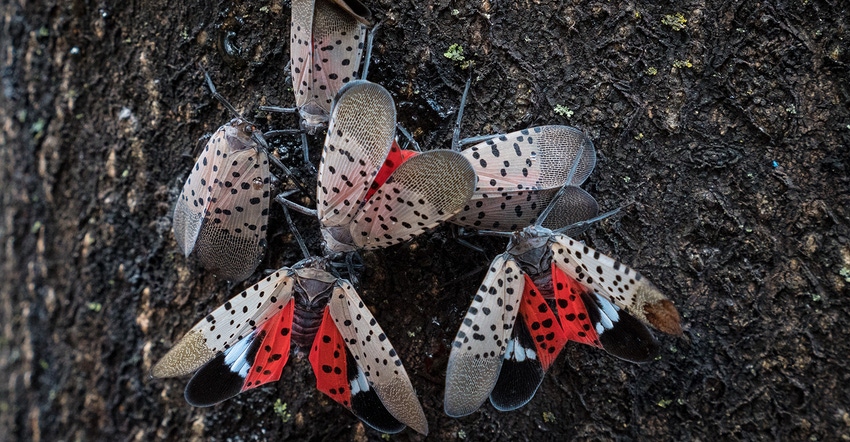
Here’s something else to worry about in the off-season.
Not only does the spotted lanternfly have the potential of hitchhiking from coast-to-coast via truck or train, researchers have discovered they are tiny acrobats who love to climb and jump from host plant to host plant.
While SLF can fly and spread long distances via wind currents, they typically land and distribute to other hosts, depositing their eggs on non-living surfaces that might be shipped from infested areas.
Earlier this year, U.S. Department of Agriculture researchers set out to discover the insect’s dispersal patterns as part of developing sustainable pest management strategies. What they found was both surprising -- and scary.
Using a quarantined zone in Virginia, they collected spotted lanternfly nymphs and adults from host plants to measure their vertical climbing and horizontal jumping capacities, evaluating all mobile life stages under field conditions.
Tracy Leskey and Laura Nixon at the Appalachian Fruit Research Station discovered the youngsters (nymphs) climbed significantly longer vertical distances compared with adults while the in-betweeners, the early adults in the pre-oviposition period, jumped longer horizontal distances compared with both nymphs or late adults.
Those discoveries have prompted further study to more clearly understand the lanternfly’s migration pattern with the goal of ultimately delivering scientific solutions to this agricultural challenge. The invasive species, native to regions in Southeast Asia, was first discovered in Pennsylvania in 2014 where it began to destroy fruit crops, i.e., grapes, as well as other plants and trees by hopping from plant-to-plant.
There were reports earlier this year that the opportunistic traveler might have hitched a ride to the West Coast from some already-infested area in perhaps the mid-Atlantic states. One unofficial report had the discovery of a living, adult spotted lanternfly found on a tree in an urban area in Davis, prompting a fear that the insect might have hatched.
But Surendra Dara, University of California Cooperative Extension entomologist in San Luis Obispo, tells Western Farm Press: “I’d just like to clarify that the announcement of finding that live insect wasn’t an official report (and) as far as I know, spotted lanternfly -- a major threat to the grape-growing industry --- hasn’t been reported in California.”
Just a matter of time
Those who deal with integrated pest management are pretty unanimous in the feeling that it’s not if, but when, SLF will arrive in California where, like giant aphids, the pest will begin sucking sap out of plants and trees, depleting nutrients and reducing plant vigor. And in the process, the phloem feeding bug emits waste sugars (referred to as honeydew) that cover plant leaves and invite fungi to grow a sooty mold coating that inhibits the plants’ photosynthesis and causes it to rot.
Citing the Boy Scout motto of “Be Prepared” and writing in the Journal of Integrated Pest Management, the entomologist advised pest managers wanting to establish a first line of defense against the problematic invasive insect. “I don’t want to scare people,” he wrote, “but this has the potential to spread and we don’t have a biological-control agent.”
One property owner inside a quarantined area in Pennsylvania, a beekeeper, noticed the arrival of the spotted lanternfly, thinking it to initially be stink bug nymphs. Once the SLF infestation was verified, he commented that it “spreads like wildfire and I can’t imagine it being contained.”
Speaking recently at the 4th Ag Innovations Conference on Comprehensive Crop Care, Dara noted: “The spotted lanternfly is not a fly, but a plant hopper, a sucking pest with a big host range and grapes are particularly at risk because our climate host range is ideal for this pest. It’s an excellent hitchhiker with few natural enemies and California growers should be concerned.”
For more news on pests, disease management and other issues affecting vineyards, subscribe to the bi-monthly newsletter The Grape Line.
About the Author(s)
You May Also Like




